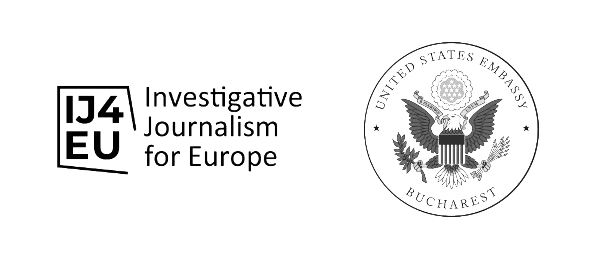Crossborder Funding: Has Budapest Closed Down the Money Tap?
30.03.2022

Zoltán Sipos
In 2021, the Gábor Bethlen Fund granted a significantly lower amount of funding for Hungarian organizations outside Hungary compared to previous years. Big grants up to billions of HUF are almost missing for Transylvania; real estate investments began earlier will be finalized, but hardly any new investments are made.
Last year, Gábor Bethlen Fund (the main fund the Hungarian government supporting Hungarian communities abroad) awarded funds amounting to HUF 32.3 billion (EUR 91.5 million at daily exchange rate) to Hungarian organizations outside Hungary. This amount is around a quarter of the HUF 129 billion (EUR 365 million) awarded in 2020.
Funds granted for Transylvania have decreased at approximately the same rate: while the sum allocated in 2020 amounted to HUF 46.7 billion (EUR 132 million), in 2021 the amount decreased to HUF 13.3 billion (EUR 37.6 million) according to our summary.
We can only speculate about the reasons for this significant decrease, as we are not aware of any official explanations, and the Gábor Bethlen Fund did not respond to our inquiries. One of the reasons for the drying up funding is without doubt Hungary’s record budget deficit of HUF 5100 billion.
The Transylvanian Media Association (Erdélyi Médiatér Egyesület) is the absolute record breaker
Looking through all funding decisions regarding Transylvania, it is clear that there is a much lower number of decisions granting amounts above billions of forints compared to previous years. The highest amount, HUF 2.2 billion (EUR 6.2 million) was awarded to the Transylvanian Media Association (Asociația pentru Spațiul Media Transilvan) which operates the Székelyhon media trust. We have written in more details about the media trust’s grant applications, reports containing contradictory audience figures and abandoned development projects here.
The Várbástya-Bastion Association of Timișoara was awarded HUF 1.1 billion (EUR 3.1 million) for real estate investment, property development and purchase of equipment. Sepsi OSK SA, the joint-stock company behind the Sepsi OSK football team, comes in third in this imaginary top list with HUF 792 million (€2.2 million).
The majority of the company’s shares are held by Hodut Rom Ltd., the Romanian subsidiary of Hódmezővásárhelyi Útépítő Ltd. The association behind the football team, Asociația Club Sportiv Sepsi OSK, is a minority shareholder in the company.
Sepsi Arena will be finished, the Sonnenfeld Palace restored
The support granted in November is in all likelihood the amount needed to finish and equip the new stadium of Sepsi OSK. The Sepsi Arena had been planned to be inaugurated in October 2021, but it was postponed to the spring of 2022 due to the pandemic.
The School Foundation (Fundația pentru Școală) funded by the DAHR was also awarded HUF 713 million (EUR 2 million) for property development. The foundation has several ongoing real estate investments in Oradea and Cluj-Napoca. The decision does not state what the funding was awarded for precisely; however, the foundation announced not long ago that they will start the restoration of the Sonnenfeld Palace in Oradea, bought in December 2018. We wrote more on the property investments of the Iskola Alapítvány here.
One more property investment funding to mention is the Transylvanian Traditions Foundation (Fundația Traditio Transylvanica), which received HUF 550 million (EUR 1.5 million) to renovate the Barcsay family’s former castle in Gilău. This project is also co-financed by an EU-grant of EUR 5 million.
The Roman Catholic Diocese of Oradea was awarded a grant of HUF 392 million (EUR 1.1 million), most probably needed to continue the restoration of the Baroque episcopal palace.
Much lower amounts for big winners of previous years
Although the education and training funding (HUF 3 billion per year for Transylvania) and the national importance/regional program (of which the Transylvanian share is roughly HUF 2-300 million) started in 2002 remain unchanged, a number of programs from previous years are absent from the 2021 decisions. These include the twinning programs, the youth and scout programs, the Without Borders program and the diaspora grants.
Perhaps the decrease of funding is more visible if we look at the amounts of money received in 2021 by the big winners of 2020 in Transylvania. It should be mentioned at this point that the HUF 129 billion awarded in 2020 was a funding record: it was an outstanding year even compared to the yearly increasing funds of the preceding years.
In 2020, for instance, the Sapientia Foundation, operator of the Sapientia University, was awarded a total of HUF 8.5 billion (EUR 24 million), but it did not receive any money in 2021. The Reformed Diocese of Transylvania (EREK) received grants in a total of HUF 13 billion (EUR 37 million), but in 2021 it was only granted HUF 735 million (EUR 2 million) for a retirement home in Aiton village near Cluj-Napoca, and the restoration of the Teleki house in Târgu Mureș.
The School Foundation won a total of nearly 2 billion HUF (EUR 5.6 million) in 2020 for various applications – in comparison, the HUF 713 million was a conspicuous decrease last year. The football club of Miercurea Ciuc (Asociația Futball Klub Miercurea Ciuc) had a funding of HUF 2.7 billion (EUR 7.6 million) in 2020, which decreased to HUF 141 million (EUR 400 thousand) in 2021.
The Szeklerland press trust was the only one to get more money
The only beneficiary that received significantly more funding last year was the Transylvanian Media Association: their HUF 2.2 billion in 2021 is significantly more than the HUF 1.8 billion they received in 2020.
“The final amount of the grants usually jumps high at the end of the year, but this time it didn’t due to the huge budget deficit, as it has been announced as well. The deal is that no new big project will be launched, but they will provide the amounts needed to finish the ongoing projects because of the increase in construction prices” explained a political source with insight into the subsidy system.
We reached out to Zalán Rudolf Erdélyi, CEO of the Gábor Bethlen Fund, with a series of questions. We wanted to know the reasons for the significant decrease in grants.
What is the reason why, although far fewer large real estate investments were supported last year, the Transylvanian Media Association received a record amount of HUF 2.2 billion in grants?
Finally, what is the outlook for 2022: will the level of funding remain the same as last year or will it increase again? We have not received a reply to our inquiries.
How we did the calculations
Although several actors in the Hungarian state apparatus support organisations across the border, there is no up-to-date, easily searchable database of these grants. Among the various grant opportunities, the Gábor Bethlen Fund (BGA) stands out as the most prominent – this is the fund used by the government to finance the implementation of its national policy objectives.
The BGA Committee decides on the applications submitted. We have aggregated these decisions and the amounts presented in this article are based on these decisions. However, there is also another database on the BGA website which contains the payments made.
A difficulty we have encountered in our work was that in recent years the Commission has very often made later adjustments to the amount of a decision taken in a previous year.
As the BGA has not published any instructions on how to account for these later changes, and has not answered our questions either, we have decided to take the original decisions into account.
At the same time, decisions for a given year may not cover all payments. It is possible that some of the decisions for a given year are paid in a different year, so the decreasing number of decisions for beneficiary organizations may not result in a drastic decrease in terms of payments for 2022.
Translation: Auguszta Szász. Original article here.
Cover photo: Hungarian PM Viktor Orbán is taking selfies somewhere in Szeklerland in May 2019. Source: the Facebook page of DAHR president Hunor Kelemen
This article is part of our project aiming to monitor the 2022 parliamentary elections in Hungary. The project was funded in part by a grant from Investigative Journalism Europe (IJ4EU) and a grant from the United States Department of State. The opinions, findings and conclusions stated herein are those of the author[s] and do not necessarily reflect those of the funders.
